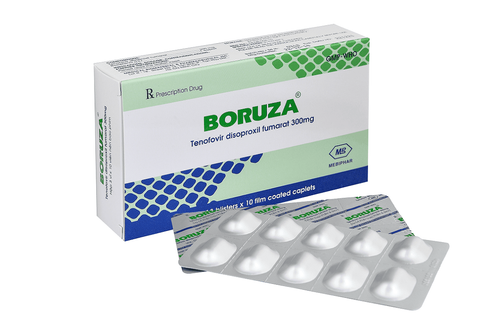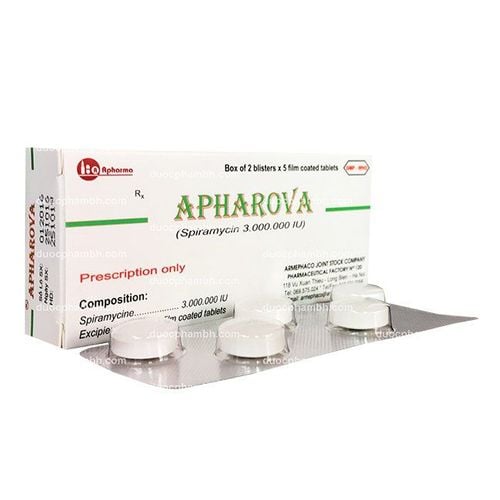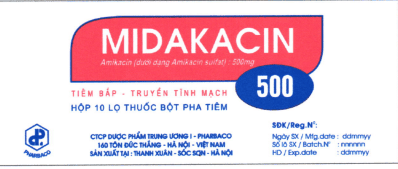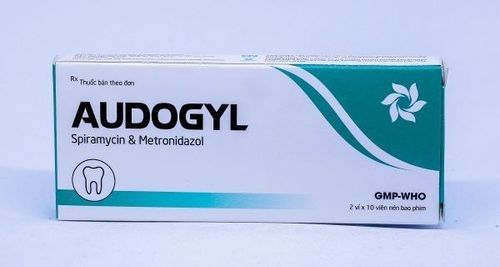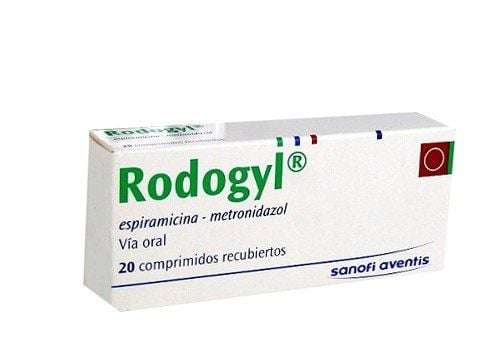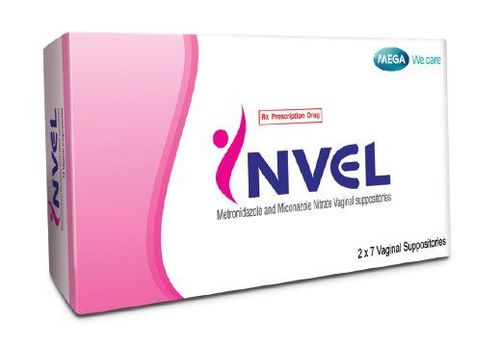This is an automatically translated article.
Befaryl is a drug belonging to the group of drugs for the treatment of parasites, anti-infectives, antivirals and antifungals with the composition Metronidazol 125mg; Spiramycin 750,000IU, and is used to treat inflammatory dental diseases such as inflammation, tooth abscess,... To ensure effective use of Befaryl, users need to follow the instructions of the doctor, co Please refer to the following article for more information about the uses of Befaryl.1. What are the uses of Befaryl?
1.1. What is Befaryl?
Befaryl belongs to the group of anti-parasitic, anti-infective, anti-viral, anti-fungal drugs.Befaryl drug includes the following ingredients:
Main active ingredients: Metronidazol 125mg and Spiramycin 750,000IU. Excipients: wheat starch, red cochenille A and some other ingredients just enough in 1 film-coated tablet. Befaryl is recommended for use in children 5 years of age and older and adults.
1.2. What is Befaryl used for?
Metronidazole antibiotic has good effect on both intra- and extra-intestinal amoebic dysentery, including acute and chronic forms. With chronic intestinal amoebic dysentery, the drug Befaryl has a weaker effect due to its poor ability to penetrate the colon.Befaryl also works well with Giardia, Trichomonas vaginalis, gram-negative anaerobes including Bacteroides, Helicobacter, Clostridium but has no effect on aerobic bacteria.
Indications for use of Befaryl
Acute, chronic or recurrent oral infections, especially inflammatory conditions, tooth abscesses, cellulitis around the jawbone, inflammation around the crown, periodontitis, stomatitis, gingivitis, parotid gland inflammation, inflammation of the submandibular region. Prevention of oral infections after dental surgery. Contraindications:
Patients with hypersensitivity to Metronidazol, imidazole derivatives, spiramycine or any of the excipients of Befaryl. The patient is intolerant to gluten, because of the presence of wheat starch in the drug. Children under 5 years old (because the dosage form is not suitable for children to drink). Subject women are in the lactation period.
2. Usage of Befaryl
2.1. How to take Befaryl
Befaryl is taken orally. Swallow the tablet whole with plenty of water, should be taken during or immediately after a meal. Do not crush, crush Befaryl tablets or mix with any other mixture. If a child has diarrhea while taking Befaryl, discontinue use immediately. The duration of treatment with Befaryl depends on the type of infection the patient has and how severe or mild the illness is.2.2. Dosage of Befaryl
Adults: 4-6 tablets a day, divided into 2 to 3 times. In severe cases (aggressive treatment phase), the oral dose can be up to 8 tablets a day. Children 6 to 10 years old: 2 tablets a day. Children 10 to 15 years old: 3 tablets a day. Treatment when missed dose:
Take the dose of Befaryl as soon as you remember. Usually medications can be taken 1 to 2 hours later than prescribed in the prescription. However, if the current time is too far from the time to take it, skipping the missed dose and absolutely not taking the missed dose can be dangerous to the user's health. Treatment of overdose:
Symptoms: Nausea, vomiting and dysregulation. Neurotoxic effects include peripheral neuritis, convulsions. Treatment: There is still no specific antidote, mainly treatment of overdose is symptomatic and supportive treatment.
3. Notes when using Befaryl
Befaryl should be used with caution in patients with suspected gastric ulcer, enteritis or chronic colitis. The dosage form of the drug is a film-coated tablet, released slowly in the body, so it can be toxic to the elderly or people with slow intestinal transit. Take the medicine in a standing or sitting position, do not take it while lying down. Discontinue use of Befaryl in case of dizziness, mental instability, ataxia. Do not drink alcohol while taking Befaryl because it can cause antabuse effect (heat, sweating, vomiting, heart palpitations). Excipients cochenille A red can cause allergic reactions, including asthma, especially in patients allergic to aspirin. The subjects that need to be noted before using Befaryl: the elderly, children under 15 years of age, breastfeeding women, patients with liver failure, kidney failure, people with hypersensitivity and allergies to any substance in the composition of the drug. drugs, ... Or subjects with hepatic coma, myasthenia gravis, stomach ulcers. Lactation: Since both Spiramycin and Metronidazole are excreted in human milk, the use of Befaryl should be avoided while breastfeeding. In pregnant women: Animal studies have shown that metronidazole is not teratogenic and is not toxic to the fetus. In a clinical study of many pregnant women given Metronidazole during the first trimester, there were no cases of abnormality detected by ultrasound. For Spiramycin, which crosses the placenta, but the concentration of the drug in the placental blood is lower than in the mother's blood, Spiramycin should not cause complications for pregnant women.4. Befaryl side effects
Common: Gastrointestinal disorders: Nausea, actual vomiting, stomach pain, diarrhea. Allergic reactions: Urticaria. In the mouth there is a metallic taste, stomatitis, glossitis. Moderate leukopenia, which is reversible immediately after discontinuation of the drug. Rare: Symptoms commonly associated with prolonged treatment duration Neurologic: Dizziness, loss of motor coordination, paresthesias, ataxia, sensory and motor polyneuritis. Urine: The urine is reddish brown due to the presence of water-soluble pigments produced during drug metabolism.5. Befaryl drug interactions
The composition of the drug contains Acetyl Spiramycin, so Befaryl should not be used simultaneously with oral contraceptives because it will neutralize the effect of the contraceptive. Drug ingredients containing Metronidazol: When used concurrently Befaryl with Disulfiram will cause neurotoxic effects such as confusion, psychosis. Concomitant administration of Befaryl with anticoagulants: increases the toxicity of oral anticoagulants (such as warfarin) and increases the risk of gastrointestinal bleeding due to decreased hepatic catabolism. When coadministration of these two drugs is required, regular monitoring of prothrombin levels is required, and an adjustment in the dose of anticoagulants may be necessary. Concomitant administration of Befaryl with the muscle relaxant vecuronium increases the effect of this drug. When using Befaryl simultaneously with Lithium increases the concentration of Lithium in the blood, causing toxicity to the body. Concomitant use of Befaryl with fluorouracil: Increased toxicity of fluorouracil by reducing clearance.6. How to store Befaryl
The shelf life of Befaryl is 36 months from the date of manufacture. Store the medicine box or blister pack in a cool, dry place, away from direct sunlight, at a temperature below 30 degrees Celsius, in the original packaging of the medicine. Keep out of reach of children.Please dial HOTLINE for more information or register for an appointment HERE. Download MyVinmec app to make appointments faster and to manage your bookings easily.




